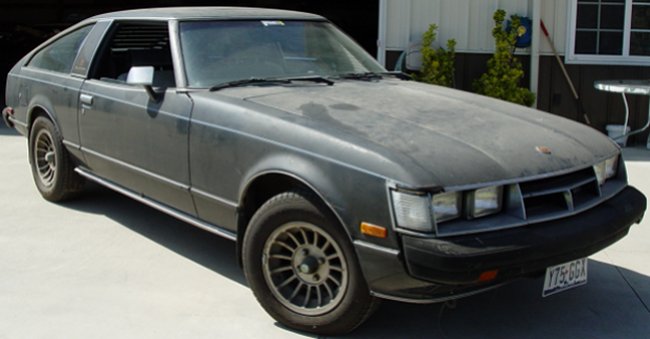With a proven winner on our hands (despite the electrical woes that we'll address later), it came time to start getting the bodywork done. We had already found evidence of a prior repaint (confirmed by the owner), but we'd soon find out just what was hidden beneath.
Unlike most of the older cars we deal with, there seemed to be an endless number of trim items to remove before we could get down to stripping the body. And (of course), several of the no-longer-available (at least via Toyota) retaining clips were either broken by the shop that did the previous paint job, or crumbled when we removed the trim. We carefully inventoried and photo-documented them so that we can hopefully locate replacements when it comes time to reassemble the car.
Despite being a virutally rust-free example, we found a lot of rust and other garbage beneath most of the trim pieces. Fortunately, nearly all the rust was superficial. The only rust-through spots we found were in the lower section of the left front fender (behind the wheel well), in the sunroof, and just above the license plate. Neither of them are at all serious and they'll be easily repaired. The old-school alarm accounts for one rather large hole in the front area of the left front fender where the old key switch was mounted. Right behind it is another smaller hole (~1/4") that has no apparent purpose. Both will be repaired by welding in sheetmetal patches.
Since the interior is in very good shape and we won't be removing it (good thing since nobody makes reproduction parts for the interior), we opted to strip the body the old fashioned way - by sanding. Yes, we could have sodablasted it, but the soda dust would no doubt have found its way inside the car's interior and wreaked havoc with not only the upholstery, but with all the gauges and electronics. We've already got a ghost in the electrical, so it's best to not tempt fate.
Once stripped, we gave the entire exterior a good coat of PPG's DPX171 self-etching primer. It's not cheap, but it does a great job of preventing corrosion both while working on the body and for years down the road after the final finish has been applied.
After etching, the bodywork begins. Fortunately, the entire car is very straight. There are a couple areas (right front fender and sunroof) where prior body work was found. But that work was well done and will be left in place (touched up as necessary). Except for a troublesome area surrounding the left sideview mirror, most of the bodywork consists of small dings and shallow dents. A few days of work filling/sanding along with some minor welding had us ready for a few coats of build primer.
With the build primer applied, we let it sit for several weeks so that the body filler could cure. This reduces the liklihood of it shrinking after we've sanded and painted it - which is why so many "quick" paint jobs show their bodywork a year or two down the road.



















